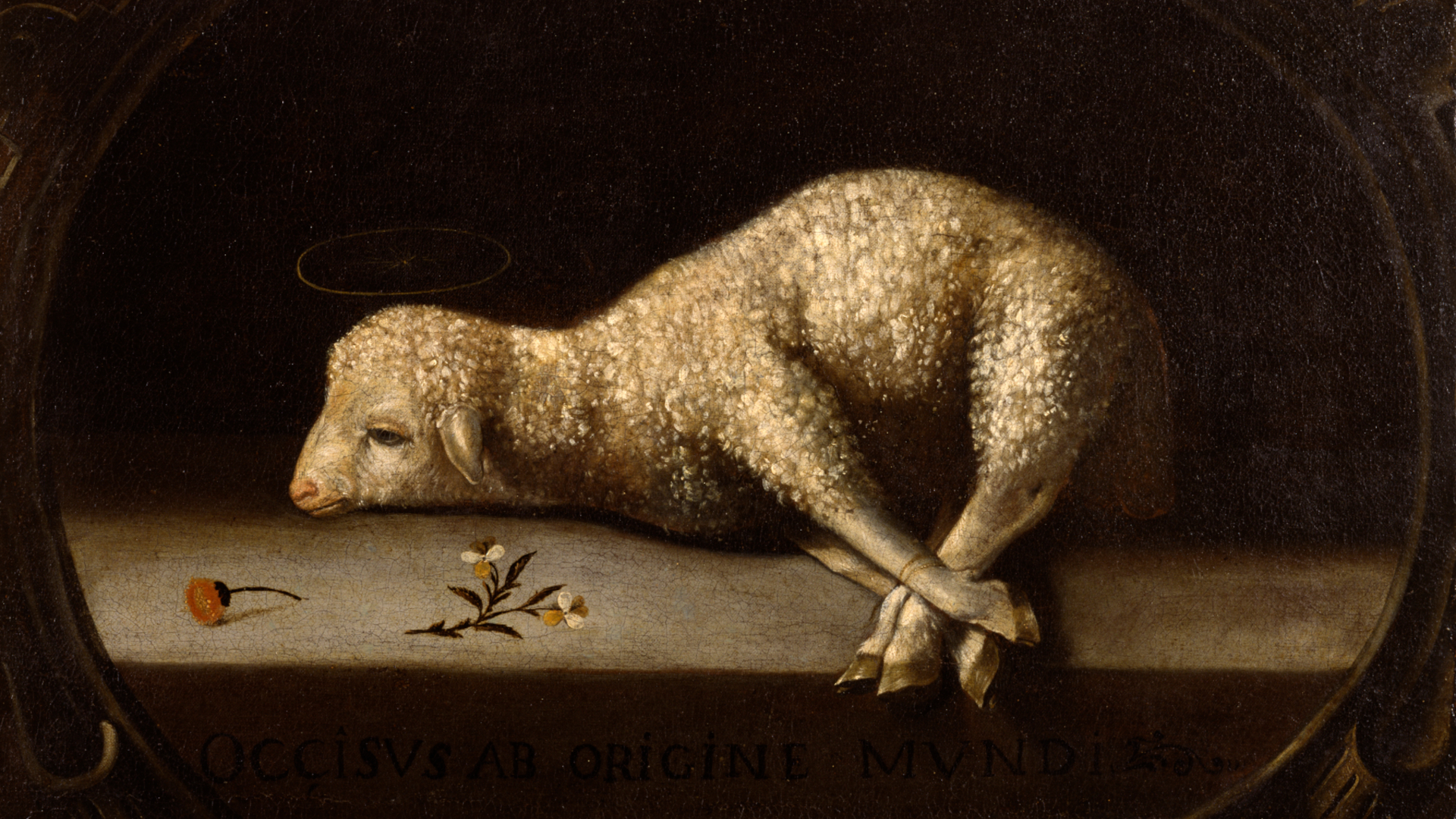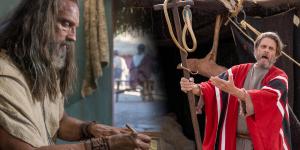You are here
How Does the Gospel of John Reflect the Day of Atonement?

John 18:4–5
The Know
Many scholars have recognized within the Gospel of John deep connections to the temple and its rituals.1 The emphasis throughout John’s Gospel account depicts the way we can return to God’s presence. Thus, in several ways John draws upon imagery of the main temple feast of ancient Israel that celebrated and enabled this return to God’s presence: the Day of Atonement.
Rabbinic writings have helped us understand how the Day of Atonement rites were practiced in the Second Temple period, building upon how the Old Testament rites were initially performed.2 These Jewish texts have likewise been helpful in understanding how Jesus and His immediate disciples would have understood the Day of Atonement, and the Gospel of John appears to reflect many of these themes.3 Jackson Abhau has recently observed how this sacred feast is portrayed in the Gospel of John through the life and sacrifice of Jesus Christ, primarily with four themes.
1. The Lamb of God
The first image that John employs in his Gospel involves the declaration of John the Baptist: “Behold the Lamb of God, which taketh away the sin of the world” (John 1:29). While the image of Jesus as a lamb has clear connections to the springtime Passover sacrifice, especially near the end of His life, scholars have noted that the “paschal lamb has no role in remitting sins.”4 Rather, the only sacrificial animal that was understood to remit sins were those offered on the Day of Atonement.
Thus, Abhau notes that while “Jesus is clearly connected with the paschal lamb in other places in the Johannine narrative,” the broader concept of the Lamb of God appears to be a “composite figure” allowing for multiple strands of symbolism at the same time.5 Seeing the Lamb of God in this light shows how Jesus fulfilled the entire Law of Moses and properly frames His death in the context that ancient Israelites and early Christians would have understood more clearly.
2. The Scapegoat Ritual
The account of Jesus’s trial and subsequent death appear to be framed in John as a reflection of two goats in Leviticus 16—namely, the sacrificial goat and the scapegoat. Every year on the Day of Atonement, lots were cast “upon the two goats; one lot for the Lord, and the other lot for the scapegoat” (Leviticus 16:8). The goat selected for the Lord would be sacrificed and its blood sprinkled on the Ark of the Covenant, while the scapegoat would be cast into the wilderness, “bear[ing] upon him all [the people’s] iniquities” (Leviticus 16:22). Additionally, later rabbinic traditions claim that the scapegoat was driven off a cliff after being humiliated by the people.6
While modern Christians may see Jesus as the scapegoat, carrying their sins out into the wilderness, such was not always the case. Abhau notes, “the earliest exegetes saw Jesus not as the fulfillment of the scapegoat, but as the fulfillment of the [sacrificed] goat.”7 This is especially evident in the Epistle to the Hebrews, which views Jesus as the Great High Priest who “by his own blood … entered in once into the holy place, having obtained eternal redemption for us” (Hebrews 9:12). This passage specifically refers to the ritual of the sacrificed goat, conducted exclusively by the High Priest on the Day of Atonement.
Barabbas, who was released by Pilate into the hands of the people, then thematically fits the role of the scapegoat (see John 18:39–40). Based on ambiguities in the Greek text, some scholars believe that far from being set free, “Barabbas is not pardoned; rather, he is lynched by the mob, humiliated and mistreated like the scapegoat on its way out of the city.”8 In any event, it is clear that the two goats from Leviticus 16 were symbolically involved in John: the one was sacrificed and the other carried away the impurities.
3. High Priestly Intercession
Just as the Epistle to the Hebrews viewed Christ as both the High Priest and sacrifice, so too does John portray Jesus as the High Priest.9 This is especially seen at the end of his narrative, when Jesus performs a high priestly intercession for His disciples in John 17.10
For example, Abhau observes that both Jesus’s Intercessory Prayer and the prayer of the High Priest on the Day of Atonement have a tripartite structure and “focus on sanctification.”11 In John 17, Jesus prays for Himself (John 17:1–5), for His disciples with Him (John 17:6–19), and finally for all who will believe on the disciples’ words (John 17:20).12 Similarly, the High Priest would sacrifice for himself, for his family, and for the community of Israel on the Day of Atonement (see Leviticus 16:6, 15). Rabbinic tradition records a version of the prayers offered in preparation for the sacrifice. Immediately preceding Jesus’s Atonement in Gethsemane and on the cross, the Intercessory Prayer appears to likewise be a preparation for Jesus’s infinite and eternal sacrifice. Following Jesus’ death, the scene shifts to the high priestly Holy of Holies as the veil of the temple was torn from top to bottom, opening the heavenly realms to all people throughout all the world.
4. The Name of Jehovah
Finally, unique to the Day of Atonement was the use of the sacred name of Jehovah. On the Day of Atonement, the High Priest would say the name Yahweh (which was likely the original pronunciation of Jehovah) in his prayer, and rabbinic tradition asserts that all those present would then prostrate themselves upon the earth. Throughout all of the Day of Atonement rites, the High Priest would utter the name Jehovah ten times.13
This is reflected in John’s Gospel through the tenfold repetition of the phrase “I am,” or egō eimi.14 This is, of course, a reference to Exodus 3:14, in which the Lord told Moses, “I AM THAT I AM.” While these statements are often obscured in English translations that render the statement “I am he” or “It is I,” scholars have noted the repeated use of this phrase especially throughout John’s Gospel. Significantly, John records ten utterances of this phrase that typically “evoke strong reactions” from the crowd and “display the features of a fixed formula” identifying Jesus as Jehovah.15
This formula culminates in the Garden of Gethsemane with the final three instances of Jesus declaring, “I am.” In an interaction unique to John’s Gospel, Jesus approaches the group of soldiers who have come to arrest Him and asks, “Whom seek ye? They answered him, Jesus of Nazareth. Jesus saith unto them, I am he [egō eimi, literally ‘I am’]” (John 18:4–5). Significantly, John also records that “as soon then as he had said unto them, I am he [egō eimi], they went backward, and fell to the ground”—similar to how the people would prostrate themselves on the Day of Atonement upon hearing the High Priest speak that holy name (John 18:6). Jesus again declares “I am” before His arresters regain their composure and capture Him.
In proclaiming “I am” throughout John’s Gospel, Jesus declared two of the most significant aspects of His life and ministry—namely, that He is Jehovah and that He is the Great High Priest of the heavenly temple.
The Why
As expressed throughout the New Testament, Jesus Christ is our Savior and the only one who was capable of performing the infinite and eternal atoning sacrifice that permits us to be reconciled, or atoned, with God. He alone is the Great High Priest of our salvation who sacrificed Himself so that we might be able to enter into God’s presence. Furthermore, as expressed in the Epistle to the Hebrews, Jesus’s Atonement allows us to have “boldness to enter into the holiest by the blood of Jesus, by a new and living way, which he hath consecrated for us, through the veil, that is to say, his flesh” (Hebrews 10:19–20). We are able to “come boldly unto the throne of grace, that we may obtain mercy, and find grace to help in time of need” (Hebrews 4:16).
Through Jesus’s infinite Atonement, we can all be sanctified, cleansed from all sin, and made worthy to enter again the holy presence of the Father. Ultimately, despite all the problems, sicknesses, temptations, and sins we experience in this life, we can look forward with solemn confidence to a glorious future, receiving comfort through the guarantee promised by Jesus to His disciples: “These things I have spoken unto you, that in me ye might have peace. In the world ye shall have tribulation: but be of good cheer; I have overcome the world” (John 16:33).
Further Reading
Jackson Abhau, “Taking Away the Sin of the World: Egō Eimi and the Day of Atonement in John,” Studia Antiqua 19, no. 1 (2020): 43–58.
Jackson Abhau, New Testament Minute: John (Springville, UT: Scripture Central, 2023).
Donald W. Parry, “The Day of Atonement: Messianic Foreshadowing,” in The Jesus Christ Focused Old Testament: Making Sense of a Monumental Book (Springville, UT: Book of Mormon Central, 2022), 104–105.
- 1. See Book of Mormon Central, “How Does John Portray Jesus as the Way of the Temple? (John 8:12),” KnoWhy 668 (April 25, 2023); John S. Thompson, “How John’s Gospel Portrays Jesus as the Way of the Temple,” in The Temple: Ancient and Restored, ed. Stephen D. Ricks and Donald W. Parry (Orem, UT: Interpreter Foundation; Salt Lake City, UT: Eborn Books, 2016), 309–335.
- 2. Because these rabbinic writings come much later, it can be difficult to determine how accurately they portray Second Temple ritual and worship. However, some aspects of these rabbinic traditions are found elsewhere, lending support to their authenticity and historicity. Regardless of their nature, rabbinic writings can help show how these rituals were understood by later audiences and so are useful in ascertaining the intended meaning of various symbols. See Jackson Abhau, “Taking Away the Sin of the World: Egō Eimi and the Day of Atonement in John,” Studia Antiqua 19, no. 1 (2020): 46–48, for a more detailed discussion of the usefulness of rabbinic literature in this regard.
- 3. For a brief analysis of the images employed in the Day of Atonement and how they point to Jesus Christ, see Donald W. Parry, “The Day of Atonement: Messianic Foreshadowing,” in The Jesus Christ Focused Old Testament: Making Sense of a Monumental Book (Springville, UT: Book of Mormon Central, 2022), 104–105. These themes are also reflected in the Book of Mormon. For one such Day of Atonement rite, see Terrence L. Szink and John W. Welch, “King Benjamin’s Speech in the Context of Ancient Israelite Festivals,” in King Benjamin’s Speech: “That Ye May Learn Wisdom,” ed. John W. Welch and Stephen D. Ricks (Provo, UT: Foundation for Ancient Research and Mormon Studies, 1998), 147–223.
- 4. Abhau, “Taking Away the Sin of the World,” 49.
- 5. Abhau, “Taking Away the Sin of the World,” 50 citing Leon Morris, The Gospel according to John (Grand Rapids, MI: Eerdmans, 1971), 147.
- 6. Abhau, “Taking Away the Sin of the World,” 51.
- 7. Abhau, “Taking Away the Sin of the World,” 51.
- 8. Abhau, “Taking Away the Sin of the World,” 51–52, notes: “While most readers assume that Barabbas walks free after his release from Roman custody, a careful reading suggests another possibility. Maclean observes that the combination of the Greek verb apolyō, ‘release,’ with the dative hymin, ‘to you,’ ‘opens up new interpretative possibilities, since releasing a prisoner ‘to them’ or ‘to the crowd’ has rather ominous undertones.’ She continues, ‘we might be inclined to see the custom as one of giving up a criminal to the mob for them to enact vengeance upon.’ According to Maclean’s reading, Barabbas is not pardoned; rather, he is lynched by the mob, humiliated and mistreated like the scapegoat on its way out of the city.” Abhau is citing Jennifer K. Berenson Maclean, “Barabbas, the Scapegoat Ritual, and the Development of the Passion Narrative,” Harvard Theological Review 100, no. 3 (2007): 322.
- 9. See especially Hebrews 7–10 for an explanation of Jesus’s role as the Great High Priest of the heavenly temple.
- 10. See Book of Mormon Central, “How Does Jesus’s Intercessory Prayer Point Us to the Temple? (John 17:1),” KnoWhy 674 (June 6, 2023); William J. Hamblin, “‘I Have Revealed Your Name’: The Hidden Temple in John 17,” Interpreter: A Journal of Latter-day Saint Faith and Scholarship 1 (2012): 61–89.
- 11. Abhau, “Taking Away the Sin of the World,” 52.
- 12. See Abhau, “Taking Away the Sin of the World,” 53.
- 13. See Abhau, “Taking Away the Sin of the World,” 56. For an example of this in the Book of Mormon, see Book of Mormon Central, “Why Did Alma Repeat the Lord’s Name Ten Times While in Prayer? (Alma 31:26),” KnoWhy 139 (July 8, 2016).
- 14. These ten absolute logia are found in John 4:26; 6:20; 8:18, 24, 28, 58; 13:19; 18:5, 6, and 8.
- 15. Abhau, “Taking Away the Sin of the World,” 54–55. Throughout the Gospel of John, Jesus uses the phrase egō eimi either to introduce a metaphorical image (such as “I am the good shepherd” in John 10:16) or to employ this absolute formula that differs in form and context from Jesus’s use of metaphorical imagery. It is this second category, the use of an absolute formula without any metaphorical image, that is found ten times and appears to be a reference to Exodus 3:14.
KnoWhy Citation
Related KnoWhys
Subscribe
Get the latest updates on Book of Mormon topics and research for free





